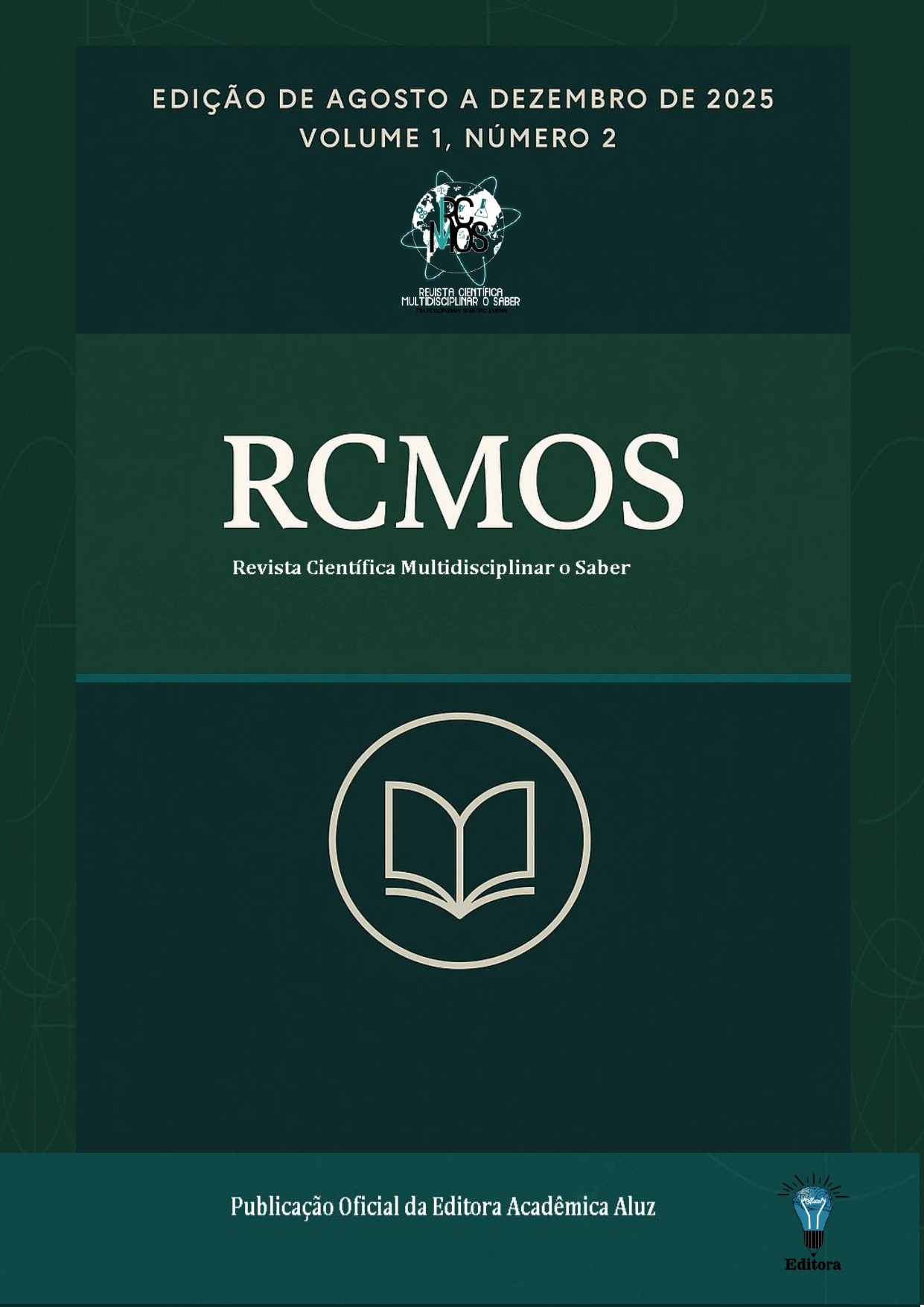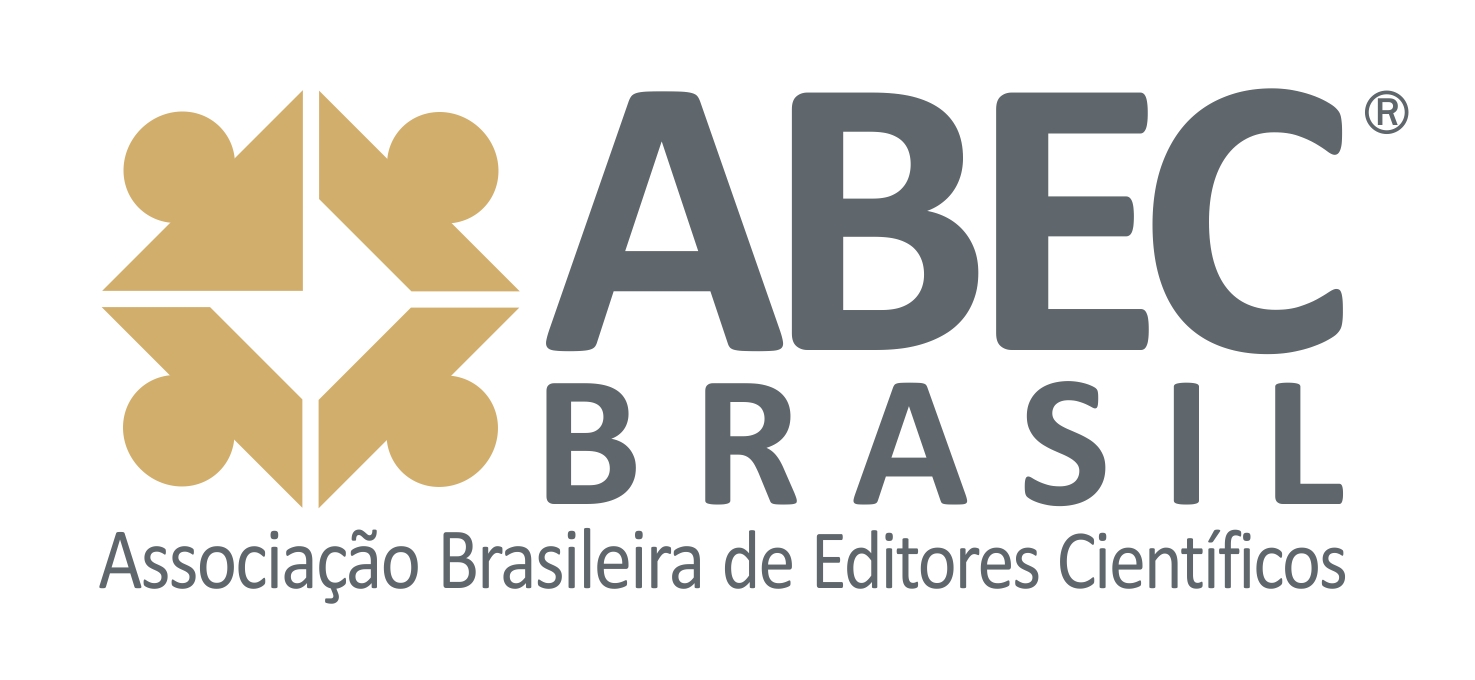Nanocellulose: a brief review from production to regulation
Nanocellulose: a brief review from production to regulation
DOI:
https://doi.org/10.51473/rcmos.v1i2.2025.1296Keywords:
Wood, celulose, nanocelulose, regulation.Abstract
Extraction of nanocrystalline cellulose (CNC) and nanofibrillar cellulose (CNF) and its applications in materials have attracted the attention of researchers and industries. This nanomaterial present high resistance and rigidity, combined with the fact of low weight and availability in the environment and sustainability. Nanocelluloses can be produced by various extraction methods that involve chemical, mechanical and enzymatic production processes. These processes can be used combined or not to obtain a final product with unique characteristics. New materials, such as CNF and CNC, will bring great benefits to the improvement and discovery new ways of producing bioingredients that allow the modification of various properties in a matrix, whether polymeric or not. In this way, contributing to the construction of new materials as well as their sustainability.
Downloads
References
ABE, K.; IWAMOTO, S.; YANO, H. Obtaining Cellulose Nanofibers with a Uniform Width of 15 nm from Wood. Biomacromolecules, v. 8, n. 10, p. 3276-3278, 2007. DOI: https://doi.org/10.1021/bm700624p
ABE, K.; YANO, H. Comparison of the characteristics of cellulose microfibril aggregates isolated from fiber and parenchyma cells of Moso bamboo (Phyllostachys pubescens). Cellu-lose, v. 17, p. 271-277, 2010. DOI: https://doi.org/10.1007/s10570-009-9382-1
ANDRESEN, M.; JOHANSSON, L-S.; TANEM, B. S.; STENIUS, P. Properties and charac-terization of hydrophobized microfibrillated cellulose. Cellulose, v. 13, p. 665–677, 2006. DOI: https://doi.org/10.1007/s10570-006-9072-1
ARAKI, J.; WADA, M.; KUGA, S.; OKANO, T. Flow properties of microcrystalline cellu-lose suspension prepared by acid treatment of native cellulose. Colloids and Surfaces A, v. 142, p. 75-82, 1998. DOI: https://doi.org/10.1016/S0927-7757(98)00404-X
BALZER, P. L.; VICENTE, L. L.; BRIESEMEISTER, R.; BECKER, D.; SOLDI, V.; JÚ-NIOR, A. R.; FELTRAN, M. B. Estudo das propriedades mecânicas de um composto de pvc modificado com fibras de bananeira. Polímeros: Ciência e Tecnologia, vol. 17, nº 1, p. 1-4, 2007. DOI: https://doi.org/10.1590/S0104-14282007000100004
CARRASCO, G. C. Cellulose fibres, nanofibrils and microfibrils: The morphological sequence of MFC components from a plant physiology and fibre technology point of view. Nanoscale Research Letter, v. 6, n. 1, p. 417, 2011. DOI: https://doi.org/10.1186/1556-276X-6-417
CAO, X., DING, B., YU, J., AL-DEYAB, S. S., Cellulose nanowhiskers extracted from TEMPO-oxidized jute fibers, Carbohydrate Polymers, 2010.
CHERIAN, B.M., POTHAN, L. A., NGUYEN-CHUNG, T., MENNIG, G., KOTTAISAMY, M., THOMAS, S. A Novel Method for the Synthesis of Cellulose Nano-fibril Whiskers from Banana Fibers and Characterization. J. Agric. Food Chem, v. 56, nº 14, 2008. DOI: https://doi.org/10.1021/jf8003674
DÉJARDIN, A.; LAURANS, F.; ARNAUD, D.; BRETON, C.; PILATE, G.; LEPLE, G. J. Wood formation in Angiosperms. Comptes Rendus Biologies, v. 333, p. 325-334, 2010. DOI: https://doi.org/10.1016/j.crvi.2010.01.010
DUFRESNE, A. Polysaccharide nano crystal reinforced nanocomposites. Canadian Jour-nal of Chemistry, v. 86, p. 484–494, 2008. DOI: https://doi.org/10.1139/v07-152
DUFRESNE, A., DUPEYRE, D., VIGNON, M.R. Cellulose Microfibrils from Potato Tuber Cells: Processing and Characterization of Starch–Cellulose Microfibril Composites. Journal of Applied Polymer Science, v. 76, p. 2080-2092, 2000. DOI: https://doi.org/10.1002/(SICI)1097-4628(20000628)76:14<2080::AID-APP12>3.0.CO;2-U
ELAZZOUZI-HAFRAOUI, S.; NISHIYAMA, Y.; PUTAUX, J. L. The shape and size dis-tribution of crystalline nanoparticles prepared by acid hydrolysis of native cellulose. Biom-acromolecules, v. 9, p. 57– 65, 2008. DOI: https://doi.org/10.1021/bm700769p
EICHHORN, S. J.; DUFRESNE, A.; ARANGUREN, M.; MARCOVICH, N. E.; CA-PADONA, J. R.; ROWAN, S. J.; WEDER, C.; THIELEMANS, W.; ROMAN, M.; RENNECKAR, S.; GINDL, W.; VEIGEL, S.; KECKES, J.; YANO, H.; ABE, K.; NOGI, M.; NAKAGAITO, A. M.; MANGALAM, A.; SIMONSEN, J.; BENIGHT, A. S.; BIS-MARCK, A.; BERGLUND, L. A.; PEIJS, T. Review: current international research into cel-lulose nanofibres and nanocomposites. J Mater Sci, v. 45, p. 1–33, 2009. DOI: https://doi.org/10.1007/s10853-009-3874-0
FENGEL, D.; WENEGER, G. Wood chemistry, ultrastructure, reactions, Berlin: Walter de Gruyter, 1989. 613 p.
FAVIER, V.; et al. Nanocomposite materials from latex and cellulose whiskers. Polymer for Advanced Technology, v. 6, p. 351-355, 1995. DOI: https://doi.org/10.1002/pat.1995.220060514
FUJISAWA, S.; OKITA, Y.; FUKUZUMI, H; SAITO, T.; ISOGAI, A. Preparation and characterization of TEMPO-oxidized cellulose nanofibril films with free carboxyl groups. Carbohydrate Polymers, v. 84, p. 579–583, 2011. DOI: https://doi.org/10.1016/j.carbpol.2010.12.029
FRONE, A. N.; PANAITESCU, D. M.; DONESCU, D. Some aspects concerning the isola-tion of cellulose micro- and nano- fibers. UPB Scientific Bulletin, v. 73, p. 133-152, 2011.
GILLIS, P. P. The elastic constants of cellulose. Cellulose Chemistry Technology, v. 4, p. 123–135, 1970.
HABIBI, Y.; LUCIA, L. A.; ROJAS, O. J. Cellulose nanocrystals: chemistry, self-assembly, and applications. Chemical Reviews, vol. 110, nº 6, p. 3479-3500, 2010. DOI: https://doi.org/10.1021/cr900339w
HABIBI, Y., FOULON, L., AGUIÉ-BÉGHIN, V., MOLINARI, M., DOUILLARD, R. Langmuir–Blodgett films of cellulose nanocrystals: Preparation and characterization. Journal of Colloid and Interface Science, v.316, p. 388-397, 2007. DOI: https://doi.org/10.1016/j.jcis.2007.08.041
IWAMOTO, S.; NAKAGAITO, A. N.; YANO, H.; NOGI, N. Optically transparent compo-sites reinforced with plant fibre-based nanofibres. Applied Physics A: Material Science & Processing, v. 81, p. 1109–1112, 2005. DOI: https://doi.org/10.1007/s00339-005-3316-z
IWAMOTO, S.; NAKAGAITO, A. N.; YANO, H. Nano-fibrillation of pulp fibers for the processing of transparent nanocomposites. Applied Physics A, v. 89, p. 461–466, 2007. DOI: https://doi.org/10.1007/s00339-007-4175-6
IWAMOTO, S.; KENTARO, A.; YANO, H. The Effect of Hemicelluloses on Wood Pulp Nanofibrillation and Nanofiber Network Characteristics. Biomacromolecules, v. 9, p. 1022–1026, 2008. DOI: https://doi.org/10.1021/bm701157n
JANARDHNAN, S; SAIN, M. Isolation of cellulose microfibrils - an enzymathic approach. Bioresources, v. 1, p. 176–188, 2006. DOI: https://doi.org/10.15376/biores.1.2.176-188
JONOOBI, M.; HARUN, J.;SHAKERI, A.; MISRA, M.; OKSMAND, K. Chemical compo-sition, crystallinity, and thermal degradation of bleached and unbleached kenaf bast (Hibiscus cannabinus) pulp and nanofibers. BioResources, v. 4, n. 2, p. 626-639, 2009. DOI: https://doi.org/10.15376/biores.4.2.626-639
KIMURA, S.; LAOSINCHAI, W.; ITOH, T.; CUI, X.; LINDER, C.R.; BROWN JR., R. M. Immunogold labeling of rosette terminal cellulose-synthesizing complexesin the vascular plant Vigna angularis. The Plant Cell, v. 11, p. 2075–2086, 1999. DOI: https://doi.org/10.2307/3871010
KOLAKOVIC, R.; PELTONEN, L.; LAAKSONEN, T.; PUTKISTO, K.; LAUKKANEN, A.; HIRVONEN, J. Spray-Dried Cellulose Nanofibers as Novel Tablet Excipient. American Association of Pharmaceutical Scientists, v. 12, n. 4, p. 1366-1373, 2011. DOI: https://doi.org/10.1208/s12249-011-9705-z
KARUS, M.; GAHLE, G. C. Use of natural fibres in composites for German automotive production from 1999 till 2005. Nova-Institut, 2006.
LEÃO, A. L. Produção de compósitos não estruturais a base de lignocelulósicos. p.147. Tese (Doutorado). FCA- UNESP, Botucatu, 1997.
LEAO, A. L.; SARTOR, S.; CARASCHI, J. Natural Fibers Based Composites Technical and Social Issues. Molecular Crystals and Liquid Crystals, v. 448, p. 161-177, 2005. DOI: https://doi.org/10.1080/15421400500388088
LEÃO, A. L.; et al. Pulping natural fibers as a raw material aiming the production of nanocellulose nanocomposites. In: PROCEEDINGS OF THE SECOND INTERNATION-AL CONFERENCE ON INNOVATIVE NATURAL FIBRE COMPOSITES FOR IN-DUSTRIAL APPLICATIONS, Roma, 2009.
LIN, N.; DUFRESNE, A. Nanocellulose in biomedicine: Current status and future prospect. European Polymer Journal, v. 59, p. 302–325, 2014. DOI: https://doi.org/10.1016/j.eurpolymj.2014.07.025
LU, P.; HSIEH, Y.L.Preparation and properties of cellulose nanocrystals: rods, spheres, and network. Carbohyd Polym, v. 82, p. 329–336, 2010. DOI: https://doi.org/10.1016/j.carbpol.2010.04.073
LU, Y.; WENG, L.; CAO, X. Biocomposites of Plasticized Starch Reinforced with Cellulose Crystallites from Cottonseed Linter. Macromolecular Bioscience, v. 5, n. 11, p. 1101-1107, 2005. DOI: https://doi.org/10.1002/mabi.200500094
MARINELLI, A. L.; MONTEIRO, M. R.; AMBRÓSIO, J. D.; BRANCIFORTI, M. C.; KOBAYASHI, M.; NOBRE, A. D. Desenvolvimento de compósitos poliméricos com fibras vegetais naturais da biodiversidade: uma contribuição para a sustentabilidade amazônica. Po-límeros: Ciência e Tecnologia, vol. 18, nº 2, p. 92-99, 2008. DOI: https://doi.org/10.1590/S0104-14282008000200005
MILEWSKI, J. V. Whiskers. In Concise encyclopedia of composite materials; Kelly, A., Ed.; Pergamon: New York, pag. 311-314, 1994. DOI: https://doi.org/10.1016/B978-0-08-042300-5.50029-7
MOREIRA, M. R. Natureza das interações celulose-água. Dissertação (Mestrado). São Car-los, IFSC/USP, 70 p., 2009.
MORÁN, J. I.; et al. Extraction of cellulose and preparation of nanocellulose from sisal fibres. Cellulose, v. 15, p. 149–159, 2008. DOI: https://doi.org/10.1007/s10570-007-9145-9
NETO, W. P. F.; SILVÉRIO, H. A.; DANTAS, N. O.; PASQUINI, D. Extraction and char-acterization of cellulose nanocrystals from agro-industrial residue – Soy hulls. Industrial Crops and Products, v. 42, p. 480– 488, 2013. DOI: https://doi.org/10.1016/j.indcrop.2012.06.041
OKE, I. Nanoscience in nature: cellulose nanocrystals. Studies by Undergraduate Research-ers at Guelph, v. 3, n. 2, p. 77-80, 2010. DOI: https://doi.org/10.21083/surg.v3i2.1132
PÄÄKKÖ et al., Enzymatic Hydrolysis Combined with Mechanical Shearing and High-Pressure Homogenization for Nanoscale Cellulose Fibrils and Strong Gels. Biomacromole-cules, v. 8, n. 6, p. 1934-1941, 2007. DOI: https://doi.org/10.1021/bm061215p
SAITO, T.; NISHIYAMA, Y, PUTAUX, J-L.; VIGNON, M.; ISOGAI, A. Homogeneous suspensions of individualized microfibrils from TEMPO-catalyzed oxidation of native cellu-lose. Biomacromolecules, v. 7, p. 1687–1691, 2006. DOI: https://doi.org/10.1021/bm060154s
SAITO, T.; KIMURA, S.; NISHIYAMA, Y.; ISOGAI. A. Cellulose nanofibres prepared by TEMPO mediated oxidation of native cellulose. Biomacromolecules, v. 8, p. 2485–2491, 2007. DOI: https://doi.org/10.1021/bm0703970
SAITO, T.; HIROTA, M.; TAMURA, N.; KIMURA, S.; FUKUZUMI, H.; HEUX, L.; ISO-GA, A. Individualization of nano-sized plant cellulose fibrils by direct surface carboxylation using TEMPO catalyst under neutral conditions. Biomacromolecules, v. 10, p. 1992–1996, 2009. DOI: https://doi.org/10.1021/bm900414t
Downloads
Additional Files
Published
Issue
Section
Categories
License
Copyright (c) 2025 Renato Augusto Pereira Damásio, Bárbara Luísa Corradi Pereira, Fernando Jose Borges Gomes, Rubens Chaves de Oliveira, Jorge Luiz Colodette (Autor)

This work is licensed under a Creative Commons Attribution 4.0 International License.












